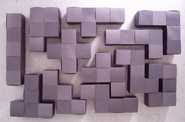Deprecated: preg_replace(): The /e modifier is deprecated, use preg_replace_callback instead in
/homepages/u37107/www.sebastian-kirsch.org/moebius/blog/wp-includes/functions-formatting.php on line
76
Two books which I bought on an impulse because I knew the authors – both of which turned out to be less than spectacular, to say the least.
![[cover]](/moebius/books/eleanorrigby.jpg) “Eleanor Rigby” is the first recent Coupland book I have read, and I honestly have to say: If this is the direction Coupland’s writing has taken in the last ten years, it it may very well also be the last. I read his first four novels (Generation X, Shampoo Planet, Life after God and Microserfs), and was a committed fan afterwards; every single one of those novels was great.
“Eleanor Rigby” is the first recent Coupland book I have read, and I honestly have to say: If this is the direction Coupland’s writing has taken in the last ten years, it it may very well also be the last. I read his first four novels (Generation X, Shampoo Planet, Life after God and Microserfs), and was a committed fan afterwards; every single one of those novels was great.
But not so “Eleanor Rigby". Coupland has forsaken his hallmark of being a “zeitgeist chaser” (after all, he popularized the term “Generation X", essentially writing a “bible” for an entire generation.)
The story is quickly told. Having put him up for adoption shortly after his birth, Liz Dunn meets her own son, Jeremy, after twenty years. Liz is plain, fat, and single; Jeremy is good-looking, charming, and a lady’s man – but there is a catch: He has multiple sclerosis, and will die a few months after their first meeting. Of course, he gives Liz a whole new direction in life. Years after his death, by an entirely unlikely coincidence, Liz gets to meet the father too – who knocked her up when she was on a school trip to Rome. This individual, of course, turns out to be good-looking, charming, and a lady’s man too: Those genes have to have come from somewhere. They live happily ever after. The End.
That is it in a nutshell. There are also some visions thrown into it for good measure, and a radioactive meteorite, but that’s the story.
I know that one can ruin any story by telling it in this way. But that is all there is to the book. The writing is as dull as the protagonist is made out to be, there is hardly any atmosphere to speak of, and character development is virtually nil (the book is told in the first person, in flashbacks.)
I still re-read bits of Microserfs and Life after God regularly, so I am quite sure that it is not my tastes that have changed – Coupland’s writing has gone downhill.
![[cover]](/moebius/books/palahniukdiary.jpg) “Diary” is my first “real” Palahniuk (when I read Fight Club, I lamented that I could not judge it accurately, because the impressions from the movie were too overwhelming.)
“Diary” is my first “real” Palahniuk (when I read Fight Club, I lamented that I could not judge it accurately, because the impressions from the movie were too overwhelming.)
So I can judge Palahniuk properly now, and the judgement is, I am afraid, not a positive one. Between Diary and Eleanor Rigby, Diary is definitely the better book – but still not good enough.
Diary is, as the title says, has the form of a diary, written (ostensibly) for a coma patient, so he can catch up with the world after he wakes up. It is written by the protagonist in the third person, occasionally addressing the intended recipient outright.
Misty Marie Kleinman, student at a small arts college, is lured away to Waytansea Island, with the promise of becoming the next artist of the fabled “Waytansea school". But years later, she is working as a waitress, has a young daughter, and her husband is in a coma after a suicide attempt. As her situation and her health decline, she starts to paint again, spurred on by her moether-in-law, her physician, and the rest of the island community.
True to the adage that all great art comes through suffering, her paintings get better the worse her health becomes. A grand art show is planned to celebrate her 100th painting, but little does she know how the Waytansea school of painting is supposed to bring prosperity to the island …
I will not spoil the ending, which will come as a surprise. Suffice to say that Palahniuk did not convince me.



![[cover]](/moebius/books/eleanorrigby.jpg)
![[cover]](/moebius/books/palahniukdiary.jpg)
